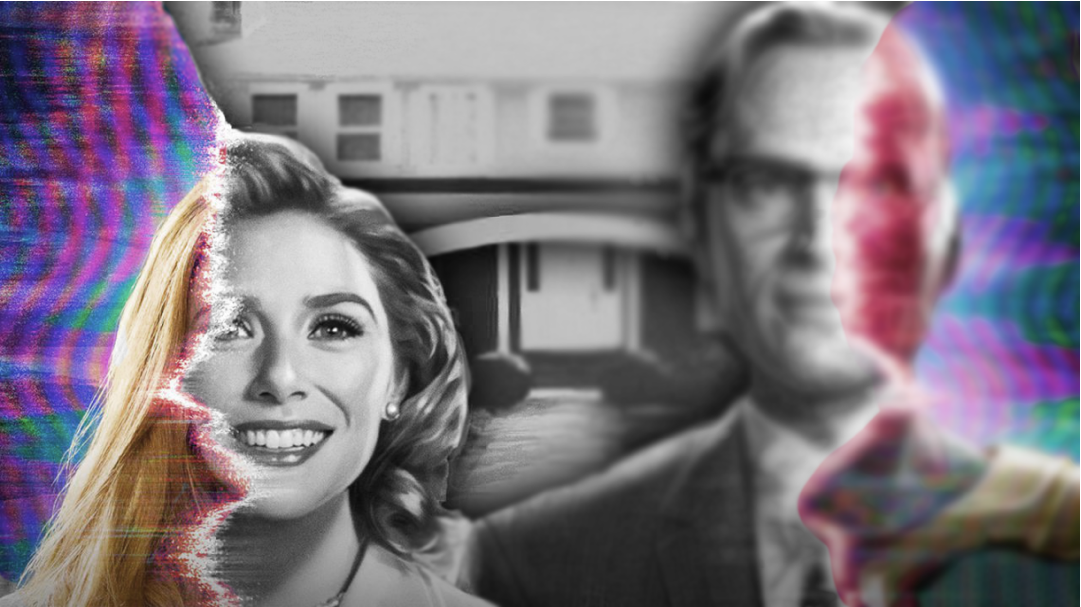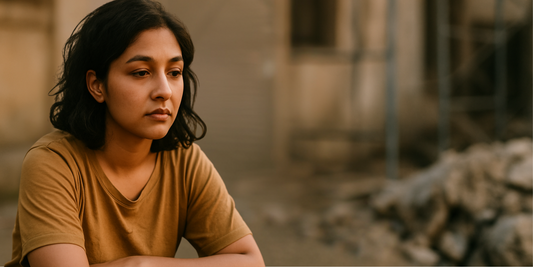WandaVision and the Many Faces of Grief
Heads up: This post contains spoilers from Marvel's WandaVision.
At first glance, WandaVision feels like a love letter to American sitcoms. But beneath the glossy laughs and period-perfect aesthetics lies a deeply human story: one about grief. About what we do when we can’t bear to let go.
Wanda Maximoff—Avenger, twin, lover—has experienced a lifetime of loss. Her parents, killed in a war-torn Sokovia. Her brother, Pietro, gone in battle. And Vision, the love she built a life around, gone while trying to save the world. But grief doesn’t stop at death. Wanda also loses the dream: the future she and Vision once imagined together. A home. Children. Peace.
And so, she does what so many of us long to do when our world collapses—she builds a new one. One where no one leaves. One where nothing hurts. One where everything is just as she wants it to be.
Wanda creates a pocket universe where Vision is alive. Where they raise children. Where sitcom laugh tracks muffle her sorrow. It’s an extraordinary metaphor for how the grieving brain tries to shield itself from pain. Sometimes, we stay busy. Sometimes, we pretend. Sometimes, like Wanda, we dissociate entirely.
When Grief Looks Like Denial
In Wanda’s world, denial isn’t a phase—it’s architecture. For several episodes, she doesn’t even fully register what she’s done. Her universe is curated to keep reality at bay. But flashes of memory, grief, and loss leak through. And slowly, denial becomes mourning.
Psychologist Nancy Schlossberg’s Transition Theory speaks to this. Grief isn’t just triggered by death, but by life’s invisible ruptures—non-events, unmet dreams, identity shifts. Wanda’s grief is precisely this. She isn’t only mourning Vision. She’s mourning the life they never got to live.
There’s No One Way to Grieve
What makes Wanda’s story powerful is that it refuses the “textbook” narrative of grief. There are no tidy five stages. No acceptable timeline. No clear moral arc. Her mourning is erratic, protective, destructive—and utterly human.
In one scene, Monica Rambeau, who has also lost her mother, chooses not to confront Wanda with anger. Instead, she offers empathy. She sees the pain behind Wanda’s actions and reaches for connection. That moment is rare, even in real life. Because most of us are taught to measure grief: Is it too much? Too long? Too loud?
The truth? There’s no such thing. Grief is messy. It is not one-size-fits-all. And judging someone else’s process is like walking into a movie at the halfway mark and trying to rewrite the script.
From Collapse to Compassion
Eventually, Wanda sees the harm her world is causing. She chooses to let go—even though it breaks her. That choice isn’t weakness. It’s courage. It’s what grief sometimes demands: to face what we’ve lost, and still choose to live forward.
Letting go is not forgetting. It’s not closure. It’s the quiet act of allowing pain to exist without letting it dictate our every breath. As mental health professionals, we often say grief can lead to growth. Not because it’s noble or redemptive, but because loss has a strange way of clarifying what matters most.
Wanda’s grief didn’t just destroy—it softened her. It made her choose truth over fantasy. It made her reach for something real.
What WandaVision Reminds Us About Our Own Grief
Grief may not look like sobbing. Sometimes it looks like productivity. Or numbness. Or laughter in the wrong places. Grief is not just about death—it’s about change, endings, and the quiet ache of unmet futures. And no, it doesn’t come with instructions.
“Even in chaos, there can be clarity. Even in fantasy, there is truth. And even in loss, there is the possibility of return—to ourselves, to our values, to what matters.”
We don’t need to create a whole new world to survive our pain. But if we do, we deserve compassion while we find our way back.
If you're grieving or processing a big emotional shift, therapy can be a grounding space to begin.
Meet our therapists—each trained to walk with you, gently, through the hard stuff.
References:




